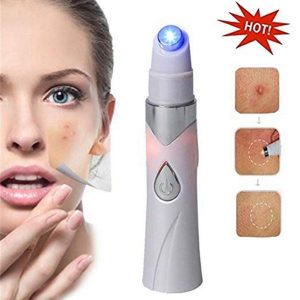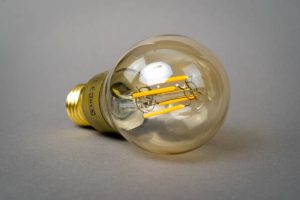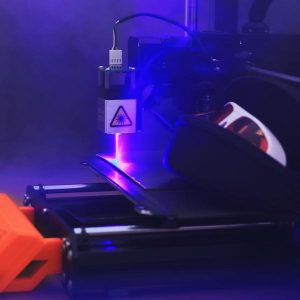The Dangers of DIY “Medical” Cosmetic Lasers

Promo Image for a Dangerous DIY Cosmetic Laser Device
Popular marketplaces like eBay and Amazon offer a variety of laser products marketed for personal cosmetic use for a variety of treatments ranging from minor skin blemishes and freckles to mole and even tattoo removal. Many people purchase and try these “DIY medical cosmetic lasers,” thinking they may be able to save themselves the cost of visiting a doctor.
However, are these inexpensive DIY lasers everything they seem? Are they comparable to the type of laser devices you’d find in a doctor’s office? Can you actually treat these conditions yourself with an inexpensive handheld device from eBay, or are you exposing yourself to unbelievable dangers that could leave you and others with severe burns, scars and even permanent blindness?
Unfortunately, as you’ve probably already gathered, unless you’re a professional YouTuber exploring the spectacularly horrifying dangers of DIY medical lasers, you should never purchase one of these! In fact, using any laser stronger than the very tiny pointers sold for presentations and cat toys can be potentially very dangerous – and handheld lasers more powerful are in fact illegal to sell in the United States (aside from specific, specialty uses). To understand why, let’s first look at what a laser is and how it works.
What is a laser and how do they work?

Laser Driver Emitting a Purple Laser Beam
The word laser is actually an acronym that stands for Light Amplification by Stimulated Emission of Radiation. In simple terms, what a laser does is output energy as light within a very specific wavelength, ranging potentially from near infrared (IR) through the visible spectrum and into the ultraviolet (UV-A, UV-B and UV-C) range, though a special type of laser diode, to an extremely fine, concentrated point. The laser diode is designed to output light at a very specific frequency which gives a laser beam its distinct color.

Common LED (Light Emitting Diode) Light Bulb
Think of how much light comes out of the LED (light-emitting diode) light bulbs commonly found around your house, the headlights of newer cars, newer street lamps, office buildings, grocery stores – just about everywhere these days. Now imagine, however, that rather than lighting up an entire room, all the energy that normally diffuses and fills the entire space – walls, floor, ceiling – is instead concentrated into an extremely small and extraordinarily powerful dot. On top of that, rather than spanning the entire visible spectrum (red, orange, yellow, green, blue, indgo, violet, as well as a bit of infrared and UV on each respective side), that light bulb is instead emitting all of that energy output in only one specific color range (e.g. a green laser or a blue laser). That’s one very powerful pinpoint of light! And, as you can imagine, it can cause some real damage when that much concentrated energy is focused on the wrong place!
What are lasers used for?

The Popular Handheld Laser Pointer Cat Toy
Despite their dangers from being just so powerful, lasers are actually all around us in objects we use every day because they have so many practical applications. Lasers, for example, are used to read and burn CDs, DVDs and Blu-Ray discs. They can be used for cutting, etching, polishing and even incinerating on the powerful side, as well as for much less exciting, though just as useful, applications like reading barcodes or detecting motion, on the lower power side of things. And, of course, don’t forget the immensely popular laser pointer cat toy!
Not surprisingly, lasers have many medical applications as well. They can be used to treat minor skin blemishes or even to obliterate cancerous tissues during surgical operations.
However, there is always one very important detail in common across all these medical applications: the laser is being operated by a highly-trained professional who has adequate education and experience with how to properly and precisely handle the laser without harming anyone (including themselves)!
Why are lasers dangerous?

Laser Etching / Cutting CNC Machine
Now that we understand how lasers operate and how powerful they are, it’s easy to see how they can be hazardous. They can cause severe burns and permanent scarring to skin and tissue, and if a laser beam hits your or someone else’s eyes – even indirectly by reflecting off another surface – the same danger applies. When lasers are operated improperly or without the proper protective equipment, like laser-rated safety glasses, they can very easily cause permanent eye damage and blindness. One of the easiest reasons to avoid DIY laser devices is simply to avoid the risk of severe, permanent retinal burns and injury that could leave you or another person blinded for life.
Do DIY “medical” lasers actually work for cosmetic treatments?
Even if we assume you have appropriate protective gear including laser-rated safety glasses, and that you’re trained in proper operation and safety of powerful laser devices, would these devices actually work?
Unfortunately, as it turns out, the answer is still generally no. Many of the popular models of DIY cosmetic laser devices themselves are not designed in a way that can actually deliver safe and proper treatment. The color of the laser is very important, and some of these devices use a drastically different color laser than you’d find in an appropriate medical device. The color of the laser is important because skin absorbs and reflects certain wavelengths of light more than others, and the wrong color laser will not only be less effective but also more likely to cause burns and permanent scarring, especially during sustained use.
That brings us to the next point – pulsing. Many real medical laser devices use pulsing lasers for certain treatments to produce the maximum result in very short repeated bursts while causing minimal heating and damage to skin and tissue. The length and frequency of these pulses on the DIY devices is generally nowhere even remotely close to those of an authentic, professional medical laser, which also increases the risk of burns and scarring while overall reducing the effectiveness of the treatment being performed.
Lastly, many of these devices involve operating the laser on yourself, which only compounds the danger. Whether you’re using it on yourself or even if you have someone else using it on you, lasers as powerful as the ones marketed for DIY laser cosmetic treatment should never be operated by anyone without adequate knowledge, training and experience operating such high-power lasers.
Can you use a DIY “medical” laser from eBay or Amazon to perform cosmetic treatments?

Cosmetic Laser Treatment in a Professional Medical Setting
Hopefully you can see very clearly just how potentially dangerous these DIY cosmetic lasers can be. Lasers themselves are inherently hazardous because of their extreme concentrated power, but using lasers for medical purposes is especially dangerous without a properly designed device and the proper training and experience with how to properly use it. So, while it may be tempting to try and skip the doctor appointment and save money by using a handheld cosmetic laser device on yourself, the chance of saving a few dollars is nowhere near worth the risk of permanent injury to yourself and/or others.
If you are looking for cosmetic laser treatments, trust your health to a true experienced professional. Dr. Raymond Wolf has over 25 years of experience performing cosmetic laser treatments and has held fellowship status in the American Society for Laser Medicine and Surgery since 1997. As you continue your research, you can view before and after photos of a past laser treatment patient and learn more about CO2 laser resurfacing and IPL treatments here.
Schedule your consultation with Dr. Wolf by calling (937) 839-4681 or request your consultation securely online and take the next confident step towards safe, professional cosmetic laser treatments today!









